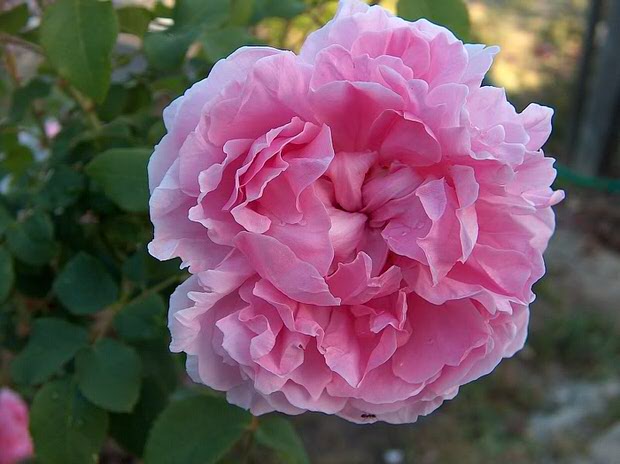






Introducing the Roses Your Grandmother Loved
Old roses are new again, and there is good reason for their newfound popularity.
Hybrid tea roses, which are the only roses many of us know today, are heir to so many bugs and diseases that one needs an advanced degree in horticulture to keep them off life support. Not so with antiques.
Some came across the plains in covered wagons, some arrived on the wings of birds, and some were provided by hardy nurserymen, who by 1800 or so had made their way west.
The most casual gardener can grow beautiful roses that are everblooming, disease resistant and fragrant. Antique roses have been around all this time, but not where one would expect to look: in graveyards, abandoned homesteads, and stranded near freeways and along back roads.
The good news is that many old roses will grow despite a black thumb and benign neglect. After all, that is what they have been doing for a century or so, without any help from humans.
Sometimes it is more than difficult to identify antique roses, especially as they may not be in bloom when found, but any dedicated plant detective knows what to expect in the way of shape and gloss, or the lack of it, in rose foliage. Some leaves are deeply toothed and veined and some less so, some are pointed and some rounded, some are bright and some are dull. They may be light green, bright green, dark green, or tinged with red, especially when they first leaf out in spring.
Most old roses bloom throughout the spring to fall seasons, depending on location.
Spring and fall are blooming times for antique roses throughout the South, but in the Northwest and Northeast, roses bloom June through August, and then go dormant for the winter.
Some make good cut flowers as well, but imagine a rambling rose hedge, a climbing bower of blooms, an English garden dotted with roses, a pergola, a trellis, an arched doorway, a rock wall adorned with blowsy blossoms.
Antique roses as a group are as carefree as roses get, but of course there is a downside. They must be pruned now and then. Unpruned, these vigorous growers will mature into Frankensteinian masses.
Also, roses need organic matter, so prepare the soil by tilling two to three inches of compost or other organic matter into at least six inches of soil.
Then, add organic mulch.
Antique roses need fertilizer as well, to do their best, but much less than it takes to coax bloom from hybrid teas.
And unlike many hybrid teas, which are grafted onto the root stock of often less appealing roses (and which have a nasty habit of sending shoots up from below the graft so that the originals take over the hybrids), antique roses grow on their own rootstock and will live unadulterated for fifty to one hundred years.
So do not believe everything Gertrude Stein said.
A rose may be a rose may be a rose, but an antique rose is a (nearly) carefree thing of beauty and a lifelong joy to behold.
Article by Mary Lynn Archibald. Mary has been a freelance writer since 1995, writing for several national and regional publications. Her subject specialties include Real Estate; Gardening; Interior Design; Women in Business; Small-Scale Ranching and Farming, and Health. She is the author of two books: Briarhopper: A History, a memoir of one woman’s life from 1913-1945 (available as either a paperback or an e-book), and the soon-to-be-published Accidental Cowgirl: Six Cows, No Horse and No Clue, a lighthearted personal memoir of a greenhorn’s life on a small cattle ranch, Publication: Summer 2007.
Copyright © www.100flowers.win Botanic Garden All Rights Reserved